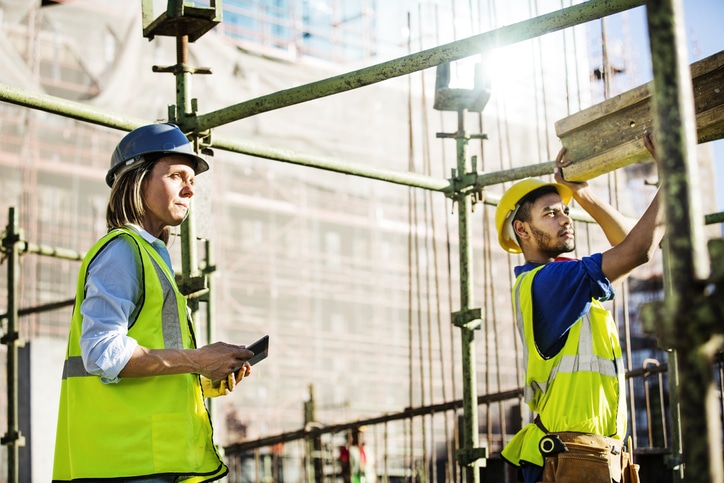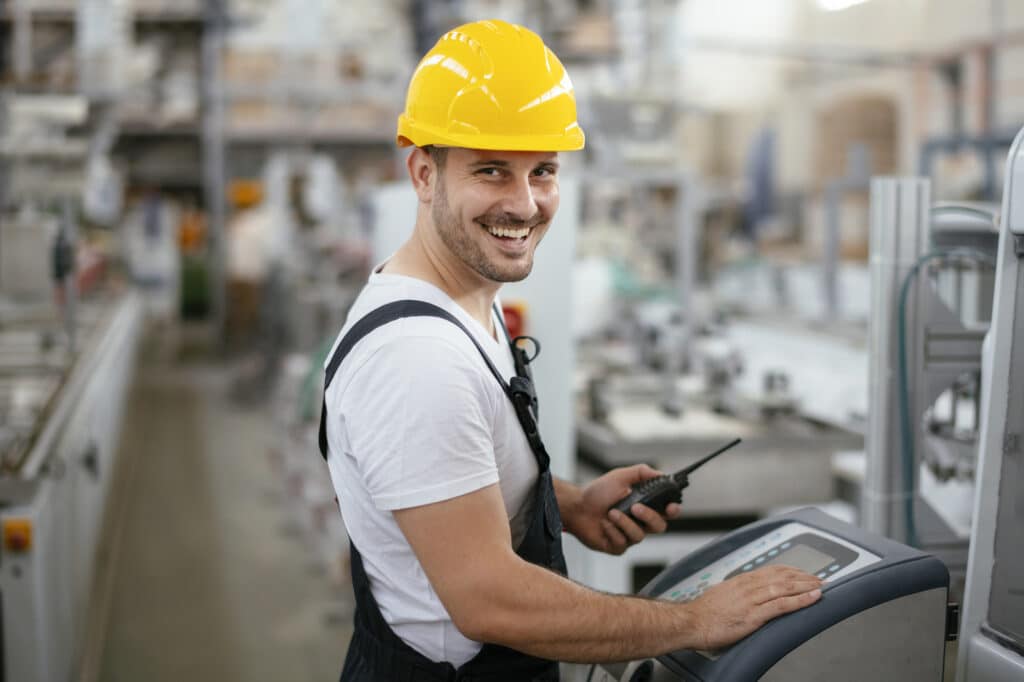Safe Work Method Statement SWMS: Comprehensive Guide for Workplace Safety

Are you aware of the potential risks and hazards that exist in your workplace? Workplace safety is an essential aspect of any business, and it’s crucial to take all necessary measures to ensure the well-being of employees. One important tool that can help achieve this is the Safe Work Method Statement (SWMS).
Table of Contents
What is a safe work method statement?
A safe work method statement (SWMS) is a document that outlines the work activities to be completed and the measures that will be taken to ensure the safety of workers (this is a requirement for all high risk works). It details how the job will be carried out, identifying potential hazards and risks, and ways to control them. The SWMS serves as a guide for all works on site to follow, demonstrating a commitment to health and safety in the workplace.
A SWMS should include key elements such as:
- The description of the work activity
- Identification of potential hazards and risks
- Control measures to be implemented to eliminate or reduce the risk
- Emergency procedures
- Communication channels to be used between workers
- Names of relevant workers and their roles
The SWMS should be regularly reviewed and updated to reflect any changes in the actual workplace. It also needs to be communicated to workers to ensure it is understood and followed.
The concept of the hierarchy of controls should be taken into account when creating a SWMS. It is a systematic approach that involves identifying hazards and assessing risks, then implementing control measures to mitigate them. The preferred order of controls is:
- Elimination
- Substitution
- Engineering controls
- Administrative controls
- Personal protective equipment
A SWMS is an important tool in ensuring that high-risk construction work activities are carried out in a safe and controlled manner. By following legislative requirements and including key elements, workers can be assured that their health and safety are prioritized in the workplace.
Why is a safe work method statement important?
Ensuring the safety and wellbeing of workers is crucial, and a safe work method statement (SWMS) plays a vital role in achieving this.
A SWMS is a document that outlines the potential hazards and risks associated with a particular work activity, as well as the control measures that need to be implemented to prevent or reduce the risk of workplace accidents and injuries. It is a legal requirement in Australia for principal contractors to create and implement a SWMS before any high-risk construction work activities commence. Failure to comply with this legal requirement can result in hefty fines and legal consequences.
The consequences of not having a SWMS in place can be severe, including increased potential exposure to hazards and workplace accidents. Workers may be exposed to dangerous working conditions, such as working at heights, working with heavy machinery, and working in confined spaces, without proper safety controls in place. This can result in serious injuries or fatalities and can have long-lasting effects on the physical and mental well-being of individuals involved.
On the other hand, implementing a SWMS has numerous benefits for both employers and employees. The key benefit is the improved safety controls that are put in place, reducing the likelihood of workplace accidents and promoting a safer work environment. A SWMS also encourages increased worker participation and consultation, as workers are more likely to provide input and feedback when they are educated and informed about the potential risks and control measures.
To effectively manage workplace hazards, a SWMS should take into account the hierarchy of controls, a systematic approach that involves identifying hazards and assessing risks, then implementing control measures to mitigate them. The preferred order of controls is elimination, substitution, engineering controls, administrative controls, and personal protective equipment. Relevant control measures that should be included in a SWMS may vary depending on the specific work activity, but industry experts recommend including measures such as consultation with workers, risk controls, management plans, and regular review processes.
What should be included in a safe work method statement?
A Safe Work Method Statement (SWMS) should contain all the necessary information to ensure the safety and health of individuals performing work activities. The following components should be included in a SWMS for each work activity:
- Work Activity: It is essential to specify the work activity involved in the SWMS, such as structural alterations, electrical installations, precast concrete building, external cladding, joinery, hardwood flooring, and mobile plant.
- Potential Hazards and Risks to Health: This section should identify all the possible hazards and risks to health associated with the work activity. For instance, working at heights, exposure to hazardous substances, electrical hazards, falling objects, confined spaces, sharp objects, noise, and vibration.
- Control Measures: Based on the identified hazards and risks, control measures must be put in place to eliminate or minimise them. Examples of control measures include engineering controls like installing safety barriers, administrative controls like implementing safe operating procedures and training, and personal protective equipment like helmets and gloves.
- Hierarchy of Controls: SWMS should indicate a hierarchy of controls that outlines the order of control measures to be used, starting from elimination, substitution, engineering controls, administrative controls to personal protective equipment.
- Consultation with Workers: Consultation is an integral part of the SWMS process. Workers should be consulted and involved in developing and implementing the SWMS. They can offer unique knowledge and insight into the potential hazards and risks associated with the work activity.
- Names of Workers Involved: SWMS should identify the names of all workers involved in the work activity and where they will be working, which will assist in effective monitoring and control of the safety hazards.
- Review and Update: A review process must be established to ensure the SWMS remains current and effective. This process should include periodic reviews of the SWMS to ensure it is still relevant and up-to-date with any changes in the work activity.
In conclusion, a comprehensive SWMS is critical in ensuring the safety and health of individuals performing work activities. It should detail all the potential hazards and risks associated with the work activity, control measures, hierarchy of controls, consultation with workers, names of workers involved, and a review process. By adhering to these guidelines, the risks of workplace accidents and injuries can be effectively minimised.
Take the first step towards a safer workplace
Invest in our SWMS Safe Work Method Statement Template and give your workers the peace of mind they deserve.

Safe Work Method Statement Template (SWMS)
How to develop a safe work method statement?
Here is a step-by-step process for creating an effective SWMS.
Step 1: Identify hazards
The first step in developing an SWMS is to identify all potential hazards. This involves assessing the work activity and determining any potential risks to workers’ health and safety.
Step 2: Assess risks
Once the hazards have been identified, the next step is to assess the risks associated with each hazard. This helps establish the likelihood and severity of injury or harm that could result from each risk. This is the initial risk assessment.
Step 3: Select control measures and reassess risks (residual risk)
After risks have been identified and evaluated, the next step is to select control measures. These may include engineering controls like installing safety barriers, administrative controls like issuing personal protective equipment guidelines, or personal protective equipment like helmets and gloves. Once the controls have been identified, the risk should be reassessed to inform the residual risk (level of risk after considering the effectiveness of the controls).
Step 4: Consultation with workers
Consulting with workers is an essential part of the SWMS development process. Workers should be involved in identifying hazards and risks, selecting control measures, and deciding the best way to communicate the SWMS to others on the worksite.
Step 5: Review and update
Once the SWMS has been created, it is important to review and update it regularly to ensure its effectiveness. This may involve revising hazard identification, reviewing control measures, or updating procedures based on changes in work activities or new legislation.
Who is responsible for creating a safe work method statement?
In Australia, the person conducting a business or undertaking (PCBU) is responsible for creating a safe work method statement (SWMS) before any high risk construction work activity takes place.
The PCBU is also responsible for ensuring that all relevant control measures are in place and that the SWMS is reviewed and updated if necessary. This requires a thorough understanding of the specific risks associated with the high risk construction work activity, as well as the control measures required to mitigate them.
In addition to the PCBU, other stakeholders involved in high risk construction work may include the principal contractor and workers who will be implementing the SWMS. The principal contractor is responsible for ensuring that the work is carried out in accordance with the SWMS and that workers comply with the control measures set out in the plan.
Effective communication channels between all parties involved are key to ensuring that the SWMS is implemented correctly. This includes regular consultation between the PCBU, principal contractor, and workers, as well as a review process to ensure that the SWMS remains effective over time.
Overall, the creation of a safe work method statement is a shared responsibility between multiple stakeholders involved in high risk construction work activities. By working together and implementing effective control measures, all parties can ensure a safe and healthy work environment for workers.

When should a safe work method statement be reviewed and updated?
The SWMS is not a static document and should be regularly reviewed and updated if necessary.
The SWMS should be revised whenever there is a change in relevant control measures or before commencing a new work activity. Additionally, it should be reviewed if there are incidents or near misses that require modification of the existing control measures. This ensures that the SWMS remains relevant and effective for the tasks at hand.
It is also important to carry out the review process in consultation with workers and health and safety representatives who are affected by the SWMS. This consultation process will ensure that potential hazards and risks are identified, and appropriate controls are put in place.
The Person Conducting a Business or Undertaking (PCBU) has the primary responsibility for reviewing and updating the SWMS. The PCBU should advise all persons involved with the high-risk construction work of the revision and give a copy of the revised SWMS to the principal contractor. The PCBU should also ensure that all workers and other parties involved in the work activity are aware of and understand the changes made to the SWMS.
In summary, a safe work method statement should be reviewed and revised regularly whenever relevant control measures are modified, in consultation with workers and health and safety representatives affected by the SWMS. The PCBU has the responsibility of advising all persons involved, including the principal contractor, of the revision and ensuring that the changes are effectively communicated and understood by all parties involved in the high-risk construction work.
How can a safe work method statement reduce workplace accidents?
By providing clear instructions and guidelines to workers, a SWMS can significantly reduce workplace accidents and ensure a safe working environment for everyone involved.
To achieve this goal, a SWMS should include a range of relevant control measures, both engineering and administrative. Engineering controls may include physical modifications to the workplace, such as installing guardrails or enclosing equipment with safety barriers, to reduce exposure to hazards. Administrative controls, on the other hand, refer to changes in work practices and policies, such as the use of personal protective equipment or scheduling work to avoid high-risk periods.
The control measures outlined in a SWMS should follow the hierarchy of controls, which prioritizes the most effective risk controls available. Firstly, eliminating the hazard entirely should be considered. If that isn’t possible, substitution or engineering controls should be implemented. Next, administrative controls, such as work procedures and training, should be used, followed by personal protective equipment as a last resort.
It’s important to note that to ensure a SWMS remains relevant and effective, consultation with workers and a review process are crucial. Consultation with workers should be a recurring process, allowing for potential hazards and risks to be identified and appropriate control measures to be put in place.
Furthermore, the review process should be conducted regularly, before commencing a new work activity and whenever there are changes in relevant control measures or incidents that require modifications to be made. This ensures that the SWMS remains up to date, and control measures are appropriately implemented to prevent potential hazards and risks to workers’ health and safety.
In summary, a SWMS is an effective tool for reducing workplace accidents by providing clear instructions and guidelines to workers. Through the inclusion of relevant control measures and adherence to the hierarchy of controls, potential hazards and risks can be avoided. Moreover, the consultation with workers and the review process helps to ensure the SWMS remains effective and relevant, leading to a safer working environment for all.

How to effectively communicate a safe work method statement to employees?
As a responsible employer, it is your duty to protect your workers from potential risks and hazards in the workplace. Merely creating a SWMS document isn’t enough; it is essential to communicate its purpose and significance to your employees effectively. Here’s how you can do it:
Educate your employees on the potential risks and hazards they may face while performing specific tasks.
Explain to them the importance of the SWMS, highlighting how it outlines the necessary control measures that need to be implemented to minimize risk and maintain safety. Encourage workers to take the SWMS seriously and highlight the potential consequences of not following the control measures outlined in the document.
Provide a detailed explanation of the control measures outlined in the SWMS.
Your employees should understand how to comply with the document’s recommendations, including the hierarchy of controls, which prioritizes the most effective risk controls available. This will help them determine what measures must be followed to mitigate risk.
Conduct training sessions for all employees to ensure they understand the details of the SWMS.
Make the document readily available and accessible in multiple languages, as required. Ensure all employees understand their roles and responsibilities in implementing control measures outlined in the SWMS, and create standard operating procedures (SOPs) that align with the document’s recommendations.
Introduce regular communication channels where workers can provide feedback and ask questions.
Employees who have a good understanding of the SWMS are in a better position to identify shortcomings and suggest improvements. By encouraging feedback and promoting open communication channels, you can make staff feel valued and involved in the workplace safety management system.
In conclusion, communicating a safe work method statement (SWMS) is as important as creating one. By following the steps outlined above, you can ensure your employees understand the significance of the SWMS and comply with the control measures outlined in the document, reducing risks and maintaining a safe working environment.
Save time and effort by using our SWMS Safe Work Method Statement Template
It’s easy to modify to suit the needs of your business or organisation and will help you stay compliant with safety regulations.

Safe Work Method Statement Template (SWMS)
